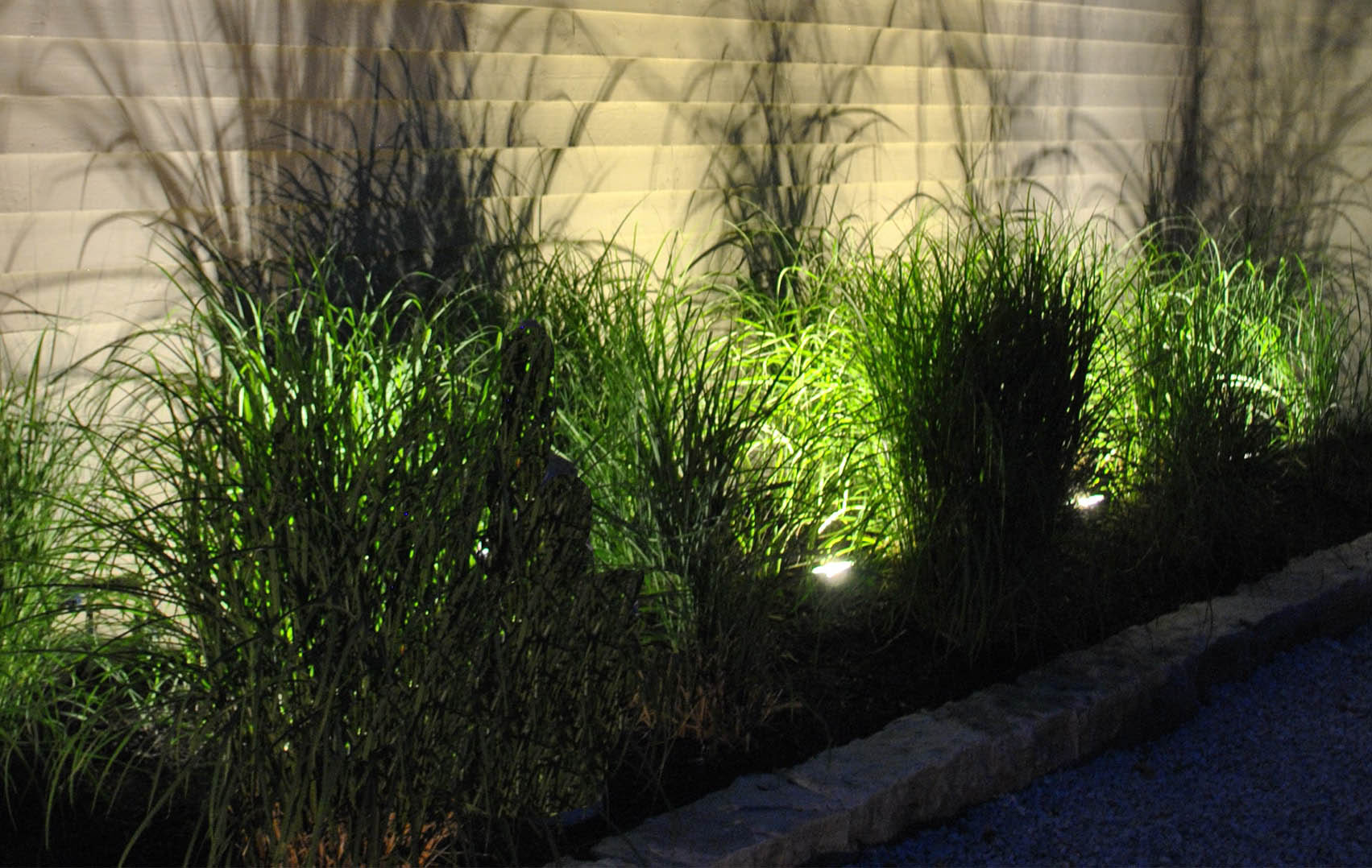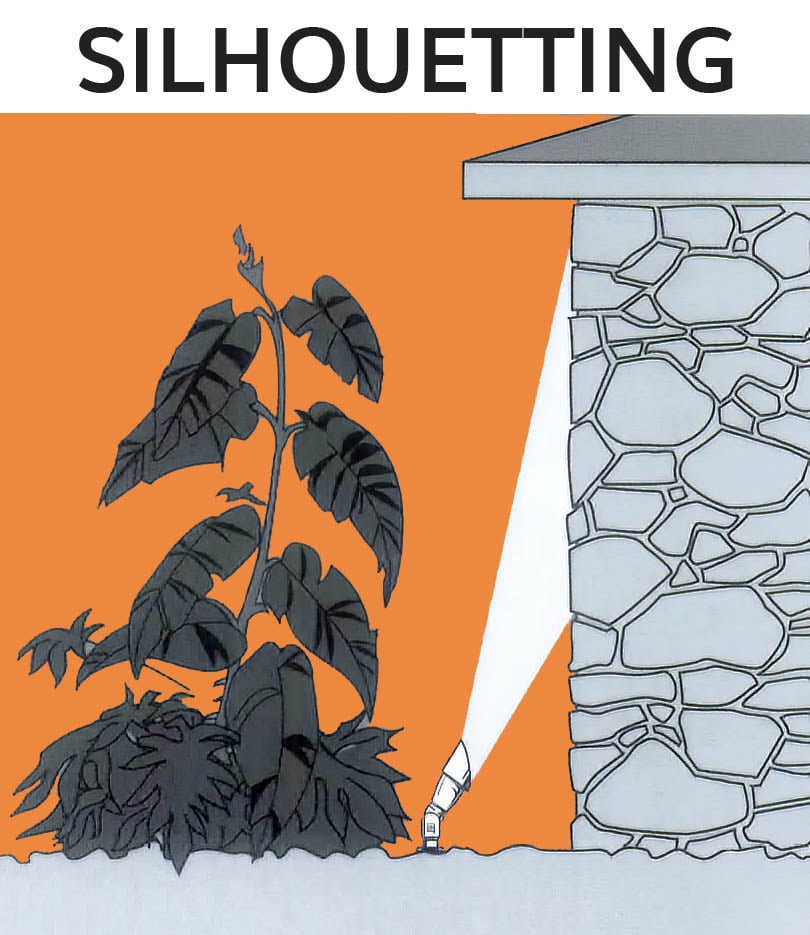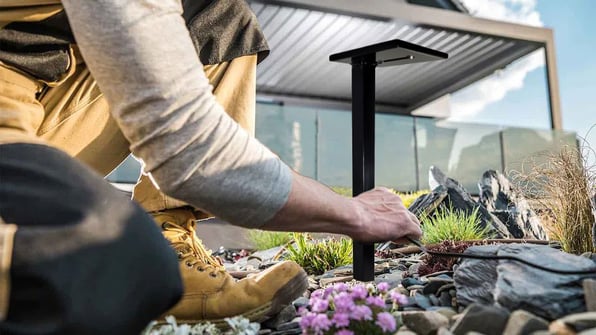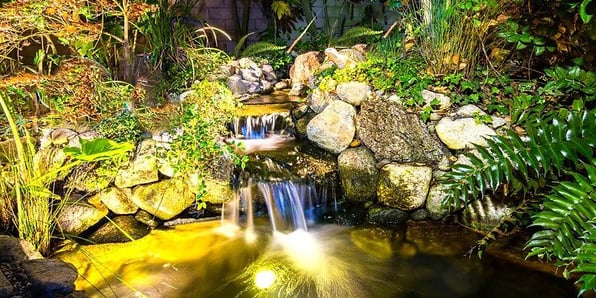
10 min read
Creating Depth and Drama: Incorporating Shadows and Silhouettes with Landscape Lighting
Posted by The Illuminator
In the world of landscape lighting, creating depth and drama is key to transforming outdoor spaces into captivating visual experiences. By skillfully incorporating shadows and silhouettes, you can elevate the ambiance, adding a touch of intrigue and enchantment to your surroundings.
Lighting techniques play a crucial role in setting the mood and enhancing the overall aesthetic appeal of outdoor areas. Shadows and silhouettes are powerful elements that bring a sense of depth and create a dynamic interplay between light and darkness. Whether you want to highlight architectural features, accentuate natural elements, or simply add a touch of artistic flair, understanding how to incorporate shadows and silhouettes effectively is essential.
In this blog post, we will delve into the world of landscape lighting, exploring various techniques for incorporating shadows and silhouettes. We will discuss the strategic placement of light sources, the use of focal points, and the art of layering lights and shadows. Additionally, we will provide insights on choosing the right lighting fixtures and offer practical tips on maintenance and safety.
By the end of this article, you'll have a deeper understanding of how shadows and silhouettes can be leveraged to create captivating outdoor environments. Get ready to unlock the secrets of lighting design and discover how to bring depth and drama to your own landscape. Let's dive in!
Understanding Shadows and Silhouettes
To harness the full potential of shadows and silhouettes in landscape lighting, it's essential to have a clear understanding of these elements and their impact on the overall aesthetic. Shadows are created when an object obstructs the path of light, resulting in areas of darkness that contrast with illuminated areas. Silhouettes, on the other hand, occur when an object is backlit, causing it to appear as a dark, distinct shape against a brighter background.
-
Shadows: Shadows add depth, texture, and dimension to outdoor spaces. They create a sense of mystery and intrigue, evoking emotions and drawing attention to specific areas or features. By strategically placing light sources, you can manipulate the position and intensity of shadows, effectively shaping the visual narrative of your landscape.
-
Silhouettes: Silhouettes offer a captivating way to showcase the unique forms and contours of objects. They have a dramatic effect, creating striking visual contrasts and emphasizing the outlines and profiles of elements such as trees, sculptures, or architectural structures. Silhouettes can evoke a sense of elegance, capturing the essence and beauty of the subject while infusing a touch of artistic allure into the landscape.
Understanding the interplay between light, shadows, and silhouettes is essential for successful landscape lighting design. By purposefully utilizing these elements, you can create a visually captivating environment that stimulates the senses and leaves a lasting impression on anyone who experiences it. In the following sections, we'll explore techniques to incorporate shadows and silhouettes effectively, enabling you to transform your outdoor space into a realm of depth and drama.
Techniques for Incorporating Shadows and Silhouettes
Now that we understand the significance of shadows and silhouettes in landscape lighting, let's explore some techniques to incorporate them effectively. These techniques will help you create a visually dynamic outdoor environment that exudes depth, drama, and aesthetic appeal.
Strategic Placement of Light Sources:
One key technique is to strategically position your light sources to cast shadows and create captivating silhouettes. Consider the following tips:
-
Angles and Directions: Experiment with different angles and directions of light to achieve the desired shadow effect. Observe how shadows interact with objects and surfaces from various perspectives to create interesting visual compositions.
-
Distance and Proximity: Adjust the distance between the light source and the subject to control the size and intensity of the resulting shadow. Closer proximity tends to produce more defined and dramatic shadows, while greater distance creates softer and subtler effects.
Utilizing Focal Points:
Another effective technique involves using shadows and silhouettes to highlight focal points in your outdoor space. Here's how:
-
Identify Focal Points: Determine the key elements or areas in your landscape that you want to emphasize. This could be a grand tree, an architectural feature, a statue, or a beautifully textured wall.
-
Lighting Placement: Position your light sources strategically to cast shadows or create silhouettes that enhance the shape and prominence of the focal points. Experiment with different lighting angles and distances until you achieve the desired visual impact.
Layering Lights and Shadows:
Layering lights and shadows adds depth, texture, and complexity to your outdoor lighting design. Consider these techniques:
-
Vertical Layering: Incorporate lighting fixtures at different heights to create vertical layers of light and shadow. By illuminating trees, plants, or architectural elements from both below and above, you can produce multidimensional effects that enhance the overall visual experience.
-
Texture Enhancement: Utilize lighting techniques such as grazing or washing to highlight the textures of surfaces. This can include brick walls, stone pathways, or wooden fences. Shadows and silhouettes can accentuate these textures, adding depth and visual interest.
By employing these techniques for incorporating shadows and silhouettes, you can transform your outdoor space into a mesmerizing visual spectacle. Stay tuned as we delve deeper into choosing the right lighting fixtures and explore creative ways to utilize natural elements in the next sections.
Choosing the Right Lighting Fixtures
Selecting the appropriate lighting fixtures is crucial for effectively incorporating shadows and silhouettes into your landscape lighting design. Here are some considerations and recommendations to help you make informed choices:
Spotlights: Spotlights offer focused and concentrated light, making them perfect for illuminating specific focal points and creating pronounced silhouettes. Use spotlights to accentuate statues, outdoor artwork, or architectural details. Experiment with the positioning and intensity of the light to achieve desired shadow effects.
Well Lights: Well lights are installed below ground level, providing a subtle and discreet lighting option. They are commonly used to uplight trees or large shrubs, casting enchanting shadows through the branches and leaves. Well lights offer a seamless integration into the landscape, minimizing their visibility while maximizing the impact of shadows and silhouettes.
Wall Washers: Wall washers are versatile fixtures that emit a wide and uniform distribution of light, creating a gentle wash of illumination across vertical surfaces. By placing wall washers near textured walls, they can enhance the depth and add captivating shadow play. This technique works well with stone walls, textured fences, or even outdoor artwork mounted on walls.
When selecting lighting fixtures, consider their durability, energy efficiency, and compatibility with your outdoor environment. Opt for fixtures designed for outdoor use and ensure they are waterproof and weather-resistant.
By carefully choosing the right lighting fixtures, you can effectively incorporate shadows and silhouettes into your landscape lighting, resulting in a visually captivating and enchanting outdoor experience. In the next section, we will explore how natural elements can be harmoniously integrated with lighting to elevate the impact of shadows and silhouettes.
Incorporating Natural Elements
To enhance the impact of shadows and silhouettes in your landscape lighting design, it's essential to harmoniously integrate natural elements. By strategically illuminating trees, plants, and architectural features, you can create a captivating interplay between light and nature. Here are some ideas for incorporating natural elements:
-
Emphasizing Trees: Trees are majestic elements that can be beautifully enhanced with lighting. Use uplights or well lights at the base of trees to cast enchanting shadows through the branches and leaves, creating a mesmerizing canopy effect. Experiment with different angles and distances to capture the unique shape and texture of each tree.
-
Highlighting Plants and Flowers: Illuminate your garden beds and flower patches to showcase the beauty of your plants during the evening hours. Use spotlights or LED strips to create subtle silhouettes against walls or fences. This technique adds depth and visual interest to your landscaping while emphasizing the intricate details of each plant.
-
Accentuating Architectural Features: If your outdoor space includes architectural features such as columns, arches, or textured walls, consider incorporating lighting to bring out their unique characteristics. By grazing the surface with light, you can create striking shadows and emphasize the textures, adding depth and drama to the overall design.
-
Water Features: If you have a pond, waterfall, or fountain, lighting can enhance the natural beauty and create captivating reflections. Underwater lighting can illuminate the water itself, while well lights or spotlights can be used to highlight the surrounding areas. The interplay of light and water creates a magical atmosphere with captivating shadows and shimmering silhouettes.
-
Organic Silhouettes: Explore the organic shapes and contours of your landscape. Utilize lighting techniques to cast intriguing silhouettes of bushes, hedges, or ornamental grasses onto nearby surfaces. These natural elements can be transformed into living artwork, adding depth and visual intrigue to your outdoor space.
When incorporating natural elements, consider the specific characteristics of each plant or feature. Experiment with different lighting techniques and placements to find the optimal balance between light, shadows, and silhouettes.
By seamlessly integrating natural elements with lighting, you can create an outdoor environment that feels harmonious, enchanting, and full of depth. In the next section, we will discuss important considerations for maintaining and ensuring the safety of your landscape lighting installation.
Maintenance and Safety Considerations
Maintaining and ensuring the safety of your landscape lighting installation is crucial for optimal performance and longevity. By following proper maintenance practices and adhering to safety guidelines, you can enjoy your illuminated outdoor space with peace of mind. Here are some important considerations:
-
Regular Inspection: Conduct periodic inspections of your lighting fixtures to check for any signs of damage, loose connections, or malfunctioning components. Ensure that wires are securely connected, and replace any damaged or worn-out parts promptly. Regular inspections help identify issues early on and prevent further damage.
-
Cleaning and Clearing: Keep your lighting fixtures clean and free from debris. Regularly remove dirt, leaves, and other obstructions that might accumulate around the lights or obstruct the light distribution. This ensures optimal illumination and prevents any potential fire hazards caused by trapped debris.
-
Bulb Replacement: Replace bulbs as needed to maintain consistent lighting levels. Over time, bulbs may dim or burn out, affecting the overall aesthetic and functionality of your landscape lighting. Choose high-quality, energy-efficient bulbs that are suitable for outdoor use, and follow manufacturer recommendations for replacements.
-
Weatherproofing: Ensure that your lighting fixtures are properly weatherproofed to withstand outdoor conditions. Check for seals and gaskets to prevent water ingress, especially in areas prone to rain or excessive moisture. This protects your fixtures from damage and ensures their longevity.
-
Energy Efficiency: Consider energy-efficient options such as LED lighting for your landscape design. LED bulbs consume less energy, last longer, and produce less heat compared to traditional incandescent bulbs. This not only reduces energy costs but also minimizes the risk of overheating and potential fire hazards.
-
Safety Guidelines: Adhere to safety guidelines when installing and maintaining your landscape lighting. Follow local electrical codes, ensure proper grounding of fixtures, and use outdoor-rated cables and connectors. If you're unsure about electrical work, consult a professional electrician to ensure a safe and reliable installation.
By following these maintenance and safety considerations, you can enjoy your landscape lighting installation for years to come, while ensuring the well-being of your outdoor space and those who inhabit it.
In the next section, we'll address some frequently asked questions (FAQs) related to incorporating shadows and silhouettes in landscape lighting to provide further insights and guidance.
Frequently Asked Questions (FAQs)
- How do shadows and silhouettes contribute to the overall aesthetic of outdoor spaces?
Shadows and silhouettes add depth, drama, and visual interest to outdoor spaces. They create a dynamic interplay between light and darkness, enhancing the ambiance and creating a captivating atmosphere. Shadows can emphasize textures, while silhouettes showcase the unique forms and contours of objects, adding an artistic allure to the landscape.
- What are the key factors to consider when positioning light sources for desired shadow effects?
When positioning light sources for shadow effects, consider angles, directions, and distances. Experiment with different angles to cast shadows in desired directions, and adjust the distance between the light source and the subject to control the size and intensity of the resulting shadows. Observing the interplay between light and objects from various perspectives will help you achieve the desired visual impact.
- Can shadows and silhouettes be incorporated in small outdoor areas?
Yes, shadows and silhouettes can be effectively incorporated in small outdoor areas. By carefully selecting lighting fixtures and strategically positioning them, you can create intriguing shadows and silhouettes even in limited spaces. Consider using smaller-sized fixtures or compact LED strips to cast captivating shadows and create visual depth.
- Are there energy-efficient options available for creating depth and drama with lighting?
Yes, there are energy-efficient options available for landscape lighting. LED lighting is an excellent choice as it consumes less energy, lasts longer, and produces minimal heat. LED bulbs are available in various color temperatures and can be dimmed to create different moods and effects. By opting for energy-efficient lighting solutions, you can enjoy the benefits of depth and drama while minimizing energy consumption.
- How can I ensure the safety of my landscape lighting installation?
To ensure the safety of your landscape lighting installation, follow these guidelines:
- Use outdoor-rated fixtures, cables, and connectors.
- Adhere to local electrical codes and regulations.
- Ensure proper grounding of fixtures.
- Regularly inspect the installation for any damage or loose connections.
- Keep lighting fixtures clean and free from debris.
- Replace bulbs with suitable replacements as needed.
- Consider consulting a professional electrician for installations or if you have any safety concerns.
Following these safety guidelines will help you enjoy your landscape lighting installation safely and securely.
If you have any further questions or concerns regarding the incorporation of shadows and silhouettes in landscape lighting, feel free to reach out to us for assistance.
In the conclusion, we'll summarize the key points discussed and encourage readers to explore the creative possibilities of shadows and silhouettes in their own outdoor spaces.
Wrap-Up
Incorporating shadows and silhouettes into your landscape lighting design opens up a world of possibilities for creating depth, drama, and visual intrigue in your outdoor spaces. By strategically placing light sources, utilizing focal points, and layering lights and shadows, you can transform your landscape into a captivating visual spectacle.
Through this blog post, we've explored techniques for incorporating shadows and silhouettes, discussed the importance of choosing the right lighting fixtures, and highlighted the harmonious integration of natural elements. We've also emphasized the significance of regular maintenance and adherence to safety guidelines to ensure optimal performance and longevity of your landscape lighting installation.
Now armed with a deeper understanding and practical insights, we encourage you to unleash your creativity and explore the endless possibilities that shadows and silhouettes offer. Whether it's illuminating majestic trees, accentuating architectural features, or enhancing the beauty of your plants, the interplay between light and darkness can bring a magical aura to your outdoor spaces.
Remember to experiment, observe, and adapt as you discover your own unique lighting design. Pay attention to the textures, contours, and focal points in your landscape, and let shadows and silhouettes be your artistic tools to create a captivating and enchanting outdoor environment.
So, go forth and embark on your lighting journey. Transform your outdoor space into a realm of depth and drama, where shadows dance and silhouettes mesmerize. Enjoy the beauty and allure of illuminated landscapes, making lasting impressions on all who behold them.
If you have any further questions or need guidance along the way, we're here to assist you. Happy lighting!




